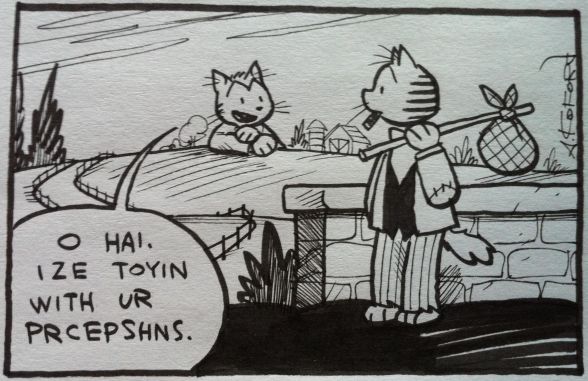I never learned conversation skills in school, but from the looks of a fifties English textbook I just bought, students used to be drilled in appropriate small talk and how to write a letter. I think this information could be quite helpful to the Internet community at large.
Here’s the first of several tips on conversation from Junior English in Action, book 3, 6th edition, 1956.
Say Something
Don’t be afraid to break the conversational ice. You needn’t say anything important or witty. Speak up and try to sound self-confident even though you’re quaking inside. What will you say?
Take a tip from Mary Ellen. She and a girl friend had just been introduced to two boys. The awkward silence that sometimes follows introductions lengthened. Suddenly Mary Ellen said in a tone of great satisfaction, “You know, we had the best scrambled eggs for supper tonight!” “Aw, we had a salad,” complained one of the boys. “How I hate salads!” And the conversation was on.
Simple, wasn’t it? Yet two things about Mary Ellen’s remark are important. She mentioned a topic of general interest — food — and she said something pleasant. When you’re stuck for a topic, remember Mary Ellen and the scrambled eggs.
Activity 1: Thinking Up Conversation Starters
Imagine yourself in each of the following situations. For each case make up three questions to start a conversation.
Example
You start a conversation with a new student in town.
1. Do you have far to come to school?
2. Is our school different from the one you attended last year?
3. Did you have a hard time finding your way around our school your first day here?
1. At a meeting of the Dramatics Club you sit next to a boy or girl you don’t know.
2. Your sister’s friend, a college freshman, calls to take your sister to the movies. Your sister isn’t quite ready.
3. You transfer to a new school. As you wait to get your program card made out, you sit next to another pupil who has just transferred to the school.
4. At the party you meet a boy who plays on your school baseball or basketball team.
